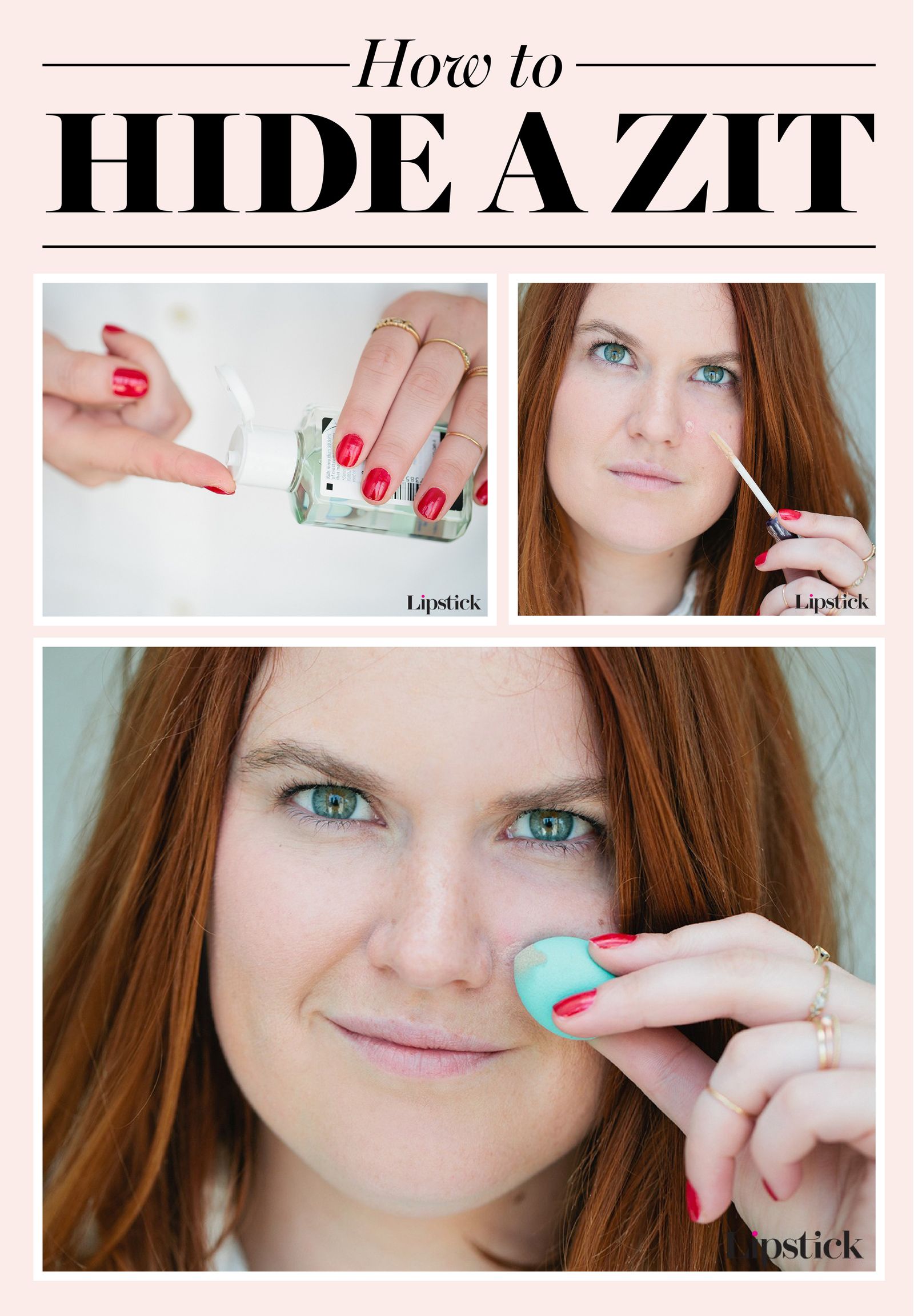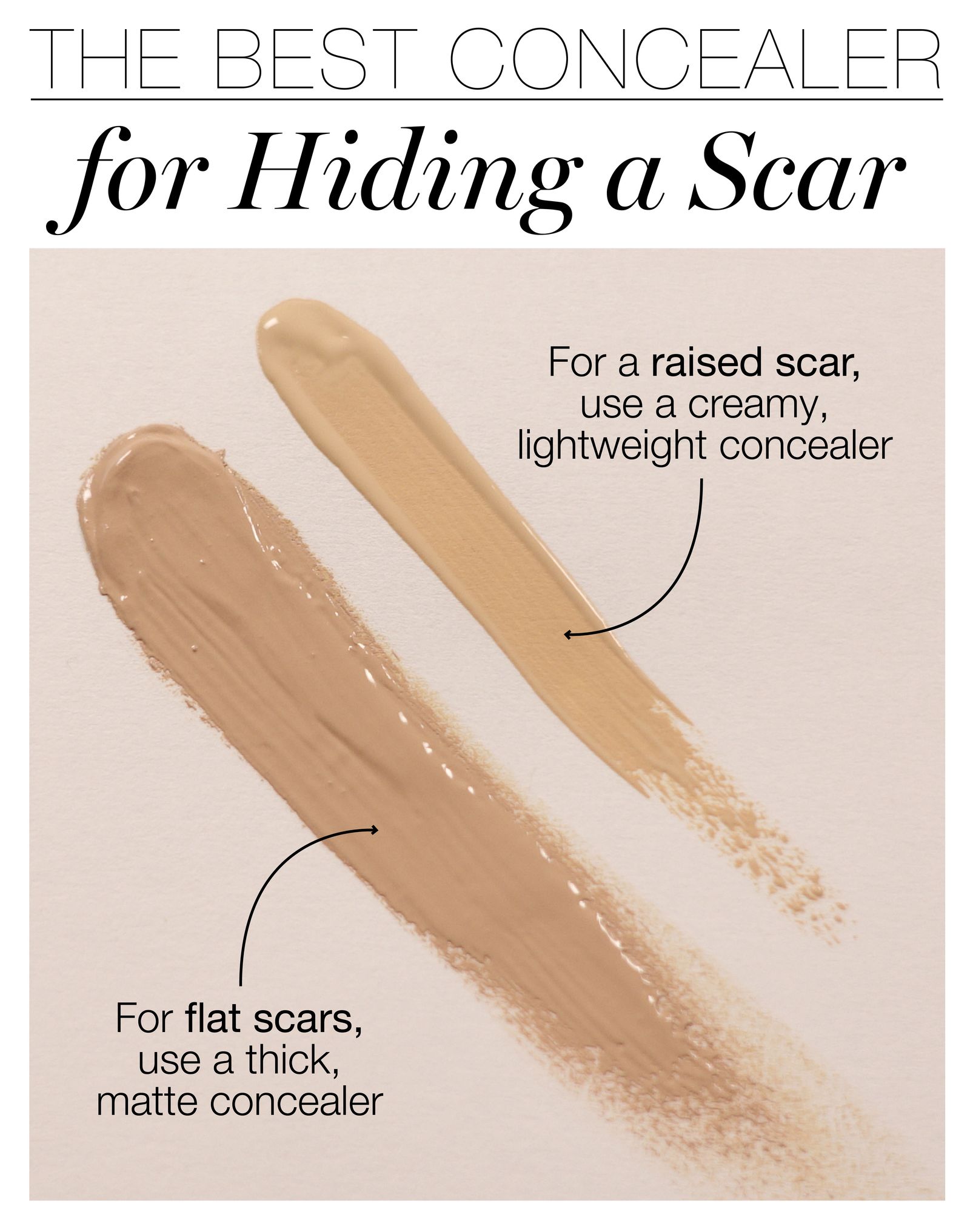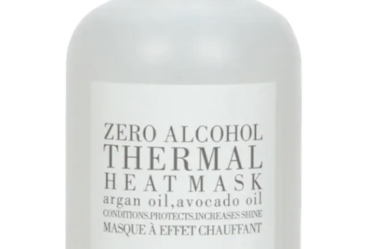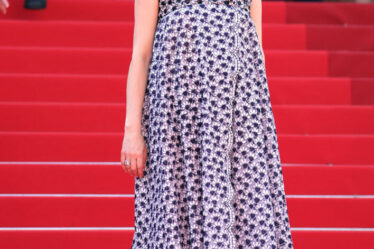
If your makeup is staying put but you’re still seeing redness, it may be time to color correct: Consider using a green color corrector prior to applying your foundation and concealer. Because green is opposite of red on the color wheel, it’ll help neutralize the redness. Then, the foundation and concealer will cover it up even more.
In the winter especially or if you have dry skin, don’t forget to moisturize this area beforehand to keep dry spots and flaking in check. (See our best winter-skin fix advice and list of favorite moisturizers to keep dryness at bay.)
How to hide breakouts
Katie Friedman
This one is may just be the most common cover-up concern, and oftentimes the hardest. (Those pesky pimples always seem to find a way to peek out!) The good news: Urban Decay founder Wende Zomnir has a quick and easy layering trick to get smooth coverage on breakouts, and yes, it truly works. “I put Urban Decay Eyeshadow Primer Potion on blemishes before applying concealer,” she says. “The primer restores the velvety texture to the blemished skin, so concealer has something to stick to.”
Have some extra time to get ready? Don’t be afraid to add a skincare step in, too. Start by sanitizing the zit with a blue light device (the wavelength of blue light helps kill acne-causing bacteria), recommends makeup artist Daniel Martin. Follow that with the primer, then concealer, then foundation. Sure, it’s an extra step, but if it means your pimple won’t show up during a midday makeup check, we say it’s worth it.
How to hide a scar
Katie Jane Hughes
First thing’s first: “Assess what type of scar it is—raised or flat,” says Geller. That’ll determine what kind of formula you should be using. “If your scar is raised, I always recommend using a creamy, lightweight concealer,” she says, like the hydrating Nars Radiant Creamy Concealer. “For flat scars, you want to use a thicker, more matte formula.” And remember, for both, choose one that’ll offer you full coverage, and use a setting powder to keep it in place.
Even with our best effort and best products, sometimes our concealer application just doesn’t look quite right. It might be, then, that you’ve fallen prey to some common concealer mistakes. Here are your concealer questions, answered.
How do you choose a concealer?
Unfortunately, it’s a rare concealer that performs equally well for all types of concerns. The best concealer to hide a pimple is different than one for dark circles, for example. Not all types of concealers are created equally.
For the best coverage, you may need to choose one concealer for blemishes and dark spots and another for undereye circles. “Undereye concealer should be less dry and thick in texture and consistency compared with pimple concealer,” explains celebrity makeup artist Mai Quynh. “You want to make sure your pimple concealer stays put, while your undereye skin is delicate and thinner, and you want a concealer that won’t settle into fine lines.” Think rich and almost pasty for spot concealer and something light, fluid, and buildable for circles.
Do you apply concealer before or after foundation?
If you’re going for a no-makeup makeup look, it can be tempting to skip the foundation and just dab on a bit of concealer. But in most cases, it’s actually better to apply foundation first—even if it’s just a light layer on the areas that need it most. By minimizing spots (and possibly even fully hiding some of them), this reduces the amount of concealer you end up needing to apply. That means a more natural finish in the end—plus less overall makeup on days you want to feel fresh-faced.
Content shared from www.glamour.com.



